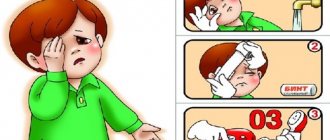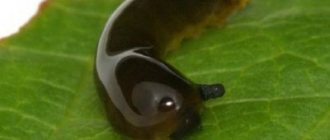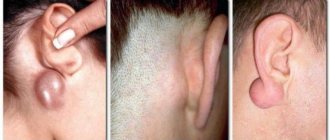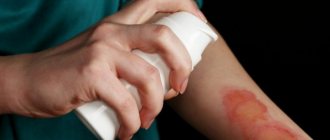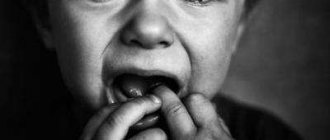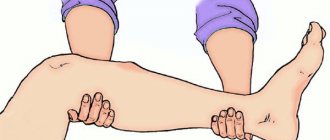Small round objects, in particular beads, are the favorite “toys” of growing and developing preschool children. Such objects very often end up in children's noses, which entails great danger. When any foreign body appears in the nostril of a growing family member, it is necessary to immediately seek medical help.
If a child puts a bead or other object up his nose, you should not engage in amateur activities. The harm caused in the form of scratches, skin damage, infection will only worsen the situation.
Main signs and consequences
Children cannot always accurately describe what happened due to age and other circumstances. The following signs indicate a foreign object:
- Unnatural functioning of the nose is observed, i.e. The baby begins to breathe erratically and chaotically through his mouth.
- The child rubs and combs the problem area.
- Excessive nervousness, anxiety manifests itself, and headaches may make themselves felt.
- The skin of the damaged nostril acquires a reddish tint, and mucus may be released along with tears from the eyes.
- When a foreign body remains in the baby’s nose for a long time, bloody, purulent clots may appear, accompanied by a characteristic unpleasant odor.
- Inflammation of the axillary zone with increased body temperature.
- Decreased olfactory function.
If such symptoms appear, you should not delay contacting a doctor - a foreign body from the nose should only be removed by a professional.
What can happen if it enters the respiratory tract?
In such a situation, a cough is observed. Breathing becomes confused, loud, sometimes accompanied by an unusual whistle.
When the lumen of the windpipe is completely or partially blocked, the skin becomes cyanotic in color, and frequent shortness of breath with squelching sounds occurs.
When a baby puts a bead or other small object into his nose, it can get into the branches of the bronchi. This condition is accompanied by symptoms reminiscent of a cold. Parents begin self-medication without the help of a qualified specialist, which can cause very disappointing consequences.
In advanced cases, sputum with blood mixed in appears. With prolonged blockage of the bronchi, emphysema, pneumonia, pneumothorax, pleurisy, purulent pneumonia, and bronchial asthma develop. When an object stuck in the respiratory tract is of organic origin (seed), an infection is observed, accompanied by an inflammatory process.
If there is the slightest suspicion of aspiration, you should seek medical help. Delay in emergency action can lead to death.
The child put plasticine in his nose
The danger of plasticine getting into the baby’s nose is the possible subsequent difficulty breathing, and also, if it gets into the nasopharynx, plasticine can cause an allergic reaction or inflammation. Usually, small pieces of soft plasticine can get stuck in the nose, causing a runny nose and redness of the eyes, and the child may complain of pain in the nose. In any case, even if you are not feeling unwell, it is better to take the baby to an otolaryngologist, or call an ambulance, and they will use a special kit to remove the foreign object.
From available means, you can use Kalanchoe or aloe juice, which is dropped into the nose (causes sneezing), only if there is no allergy. Or try to make the baby sneeze using ground black pepper, just give it a little sniff, and only if the child is over 4 years old.
Common cases
If a baby puts a seed , it is worth protecting him from independently removing this foreign body. An older child may try to blow out the interfering object by blowing his nose. Under no circumstances should you suddenly pull him into you. Inhalations are made strictly through the mouth. If the seed has not penetrated deep into the respiratory tract, the arriving ambulance doctors can get it out using special elongated tweezers.
If a child falls asleep with plasticine , immediate action should be taken. Plasticine easily enters the nasopharynx in small quantities, making breathing difficult, causing allergic reactions and unwanted inflammatory processes. There is pain in the nostril area, redness of the eyes with a runny nose. Contacting an otolaryngologist is strictly necessary; he will help quickly eliminate the foreign body from the patient’s body.
There are cases when a toddler puts a round-shaped vitamin that resembles a bead (Revit, vitamin C) into his nose. If it is “settled” too deeply, you should not take any action; such a problem should be solved by medical specialists. If the round vitamin is not too deep in the nasal cavity, the child can blow it out, while taking in air strictly through the nose. To prevent the object from entering further into the nasal passage, you should pinch the wing of the nose from above the problem area. The actions will be similar if a cherry pit or nut gets into your nose.
a pill up his nose . You cannot do without medical help in such a situation. Moreover, if it is not known what kind of drug it is and how it can harm health.
The child put a vitamin in his nose
Vitamins, especially those that we and our parents ate, and now our babies, round yellow tablets, vitamin C and Revit, often end up in the baby’s nose, because they are also interesting to take, and why not, parents say that they are useful :-)
Since your little experimenter has decided to try a vitamin, call an ambulance immediately; it is almost impossible to get the pills out on your own if they are deeply embedded. But if it is easily accessible, you can try to get it out with tweezers, or close one of the baby’s nostrils with your finger, and ask the child to blow thoroughly through his nose, while inhaling air through his mouth.
You can help yourself by shining a flashlight into the baby’s nostril to see if the vitamin is visible. You can try pressing on the side of your nose, on top of the pill, so that it flies out; due to its rounded shape, this method can help, but only if the pill is not stuck very deeply.
What happens when you go to the doctor, complications
A child stuck a bead in his nose - what to do in such a situation. In a medical institution, a foreign body is removed in several ways:
- Blowing your nose. In this case, a vasoconstrictor is used, after which the child should blow his nose well and with maximum force. Objects that are round or small in shape, such as a bead, should come out on their own.
- Blunt hook and its use. In this case, you cannot do without local anesthesia. Next, the prepared hook is inserted, it catches the foreign body, which is carefully pulled out. If the case requires it, the procedure can be repeated several times.
- Surgical intervention is necessary when a foreign body has entered the nasal passage and cannot be removed due to penetration into the soft tissue. Operations are also carried out when there are objects with sharp edges in the nose that damage the mucous membranes.
If assistance is not provided in a timely manner, the following consequences may occur:
- Purulent, chronic rhinitis, rhinosinusitis.
- Swelling of the mucous membranes, causing difficulty breathing.
- Headache, manifested against the background of oxygen starvation.
- Development of rhinolitis (nasal stone) due to prolonged presence of a foreign object in the nasal sinus.
Rhinolitis, in turn, can lead to inflammation of the frontal and maxillary sinuses. Inflammation of the middle ear often manifests itself, nosebleeds make themselves felt, and perforation of the nasal septum occurs.
What are foreign objects?
Foreign objects in children's noses can be of organic or inorganic origin.
In the first case, these are most often seeds, nuts, berries, candies, vitamins, as well as solid pieces of food - vegetables, fruits, crusts of bread, cookies. In addition, this includes various insects that can fly into the nose when a child is walking outside.
Items of inorganic origin are everything that a child may encounter at home or in kindergarten:
- beads, buttons, wheels from cars, small construction parts, cotton wool, pieces of paper, plasticine, small coins, buttons, paper clips, nails;
- fragments of nasal bones, glass, stones that ended up in the nasal cavity as a result of trauma to the nose and its sinuses.
As you understand from the composition of the material, the texture of its surface and the variety of shapes, foreign bodies are quite diverse.
According to the time of presence in the nasal cavity, foreign bodies are divided into:
- spicy. These are those that were recently (minutes, hours) introduced into the nasal cavity;
- chronic. These are those that are present in the nasal cavity for quite a long time (several days and months);
- rhinolitis. They are also called nose stones. They are formed due to the long-term presence of a foreign body in the nose. As a result, it becomes overgrown with connective tissue, which is formed due to damage to the mucous membrane by a foreign object and the development of inflammation.
Symptoms
Signs of the presence of acute foreign bodies in the nose are similar to the picture of acute rhinitis (runny nose).
Children complain about:
- itching in the nasal cavity (itching in the nose);
- difficulty breathing through the nose;
- frequent paroxysmal sneezing;
- copious watery discharge from the nose;
- bleeding, since if the nasal mucosa is damaged, there may be blood-streaked discharge or nosebleeds;
- pain in the nose when the mucous membrane is injured by a foreign object.
How to distinguish a normal runny nose from the presence of a foreign body in the nose?
If a child puts an object in his nose, some signs will help you understand that it is not a runny nose.
Signs of difference between a runny nose and a foreign body in the nasal cavity:
- If there is a foreign body, the process is usually one-sided, that is, it will itch and flow from only one nostril. With a runny nose, these signs are bilateral.
- Sudden onset. All signs appear suddenly against the background of the child’s complete health. If it is a runny nose, then children usually complain of feeling unwell (headache, drowsiness, body temperature rises).
Chronic foreign bodies are clinically similar to chronic rhinitis or sinusitis (inflammation of the paranasal sinuses).
- difficulty breathing through the nose on one side;
- purulent or purulent-purulent (streaked with blood) nasal discharge with an unpleasant odor;
- inflammation of the nasal mucosa with the formation of purulent crusts.
Rhinolith is formed as a result of the long presence of a foreign body, due to which limited inflammation of the mucous membrane occurs, characterized by the proliferation of connective tissue and the deposition of salts, which ultimately ends with the foreign body becoming overgrown with the mucous membrane.
Children at this stage usually complain that they have difficulty breathing through their nose. Rhinoliths are often discovered by chance during routine examinations.
If a child puts a foreign body in his nose: a seed, bread, paper, how can I help him at home?
Article last updated: 05/01/2018
Children are very inquisitive. While playing, they learn about the world around them. Quite often, out of play or simply out of curiosity, children push all sorts of small objects into their noses with their own hands. In addition, while playing, a child can put something in the nose of his little brother or sister, as well as of the friend with whom he is playing.
The baby stuck a seed, bead or plasticine into his nose, what should you do? Any object that has entered the nasal cavity is called a foreign body. Foreign bodies in the nose are most often treated by parents with preschool children. The baby can stuff anything that fits into his nose.
Doctors remove all sorts of objects from children's noses.
Foreign objects in children's noses can be of organic or inorganic origin.
In the first case, these are most often seeds, nuts, berries, candies, vitamins, as well as solid pieces of food - vegetables, fruits, crusts of bread, cookies. In addition, this includes various insects that can fly into the nose when a child is walking outside.
Items of inorganic origin are everything that a child may encounter at home or in kindergarten:
- beads, buttons, wheels from cars, small construction parts, cotton wool, pieces of paper, plasticine, small coins, buttons, paper clips, nails;
- fragments of nasal bones, glass, stones that ended up in the nasal cavity as a result of trauma to the nose and its sinuses.
As you understand from the composition of the material, the texture of its surface and the variety of shapes, foreign bodies are quite diverse.
According to the time of presence in the nasal cavity, foreign bodies are divided into:
- spicy. These are those that were recently (minutes, hours) introduced into the nasal cavity;
- chronic. These are those that are present in the nasal cavity for quite a long time (several days and months);
- rhinolitis. They are also called nose stones. They are formed due to the long-term presence of a foreign body in the nose. As a result, it becomes overgrown with connective tissue, which is formed due to damage to the mucous membrane by a foreign object and the development of inflammation.
Symptoms
Signs of the presence of acute foreign bodies in the nose are similar to the picture of acute rhinitis (runny nose).
Children complain about:
- itching in the nasal cavity (itching in the nose);
- difficulty breathing through the nose;
- frequent paroxysmal sneezing;
- copious watery discharge from the nose;
- bleeding, since if the nasal mucosa is damaged, there may be blood-streaked discharge or nosebleeds;
- pain in the nose when the mucous membrane is injured by a foreign object.
Adult patients almost always talk about when and what they put into their nose. Children are an exception. They are often afraid that they will be punished by their parents for their mischief, and keep silent about what happened. Therefore, it is important for parents to detect and remove a foreign body as soon as possible in order to avoid the development of complications.
If a child puts an object in his nose, some signs will help you understand that it is not a runny nose.
Signs of difference between a runny nose and a foreign body in the nasal cavity:
- If there is a foreign body, the process is usually one-sided, that is, it will itch and flow from only one nostril. With a runny nose, these signs are bilateral.
- Sudden onset. All signs appear suddenly against the background of the child’s complete health. If it is a runny nose, then children usually complain of feeling unwell (headache, drowsiness, body temperature rises).
If you think about the presence of a foreign body, but are not sure about it, be sure to show your child to the doctor. An extra examination will not harm the baby, but will help to avoid complications if there is a foreign body.
Chronic foreign bodies are clinically similar to chronic rhinitis or sinusitis (inflammation of the paranasal sinuses).
The child is worried about:
- difficulty breathing through the nose on one side;
- purulent or purulent-purulent (streaked with blood) nasal discharge with an unpleasant odor;
- inflammation of the nasal mucosa with the formation of purulent crusts.
Rhinolith is formed as a result of the long presence of a foreign body, due to which limited inflammation of the mucous membrane occurs, characterized by the proliferation of connective tissue and the deposition of salts, which ultimately ends with the foreign body becoming overgrown with the mucous membrane.
Children at this stage usually complain that they have difficulty breathing through their nose. Rhinoliths are often discovered by chance during routine examinations.
Ways of foreign bodies entering the nose
From the outside, that is, from the outside:
- children personally put something into their nose;
- some particles may end up in the nose as a result of medical manipulations (pieces of bandages, cotton wool);
- on the street, various small insects can fly into your nose;
- The baby may inhale fluff, particles of wool or pollen.
From inside:
- if a child chokes while eating and starts coughing, pieces of food enter the nasal cavity through the choanae;
- It happens that food particles get into the nose when the child vomits.
What should parents do?
What to do if you saw a baby sticking, for example, a seed up his nose?
Treatment of nasal diseases, including the removal of foreign bodies, is the task of an otorhinolaryngologist (ENT doctor).
If you see a foreign object or suspect that it may be in your child's nose, contact him. If this happens in the evening or on a weekend and the clinic is not open, you can go to the emergency room of the children's hospital.
Your child will be examined by the ENT doctor on duty, and if there is not one, then by the pediatrician on duty. The doctor will perform a rhinoscopy—examination of the nasal cavity using a nasal speculum—and, if possible, remove the foreign body. This procedure is completely painless.
Therefore, if your baby is over 2 years old, tell him about this so that he is not afraid and allows the doctor to examine himself calmly.
If a foreign body is not visible during rhinoscopy or the baby is very worried and does not allow himself to be examined, additional examination methods may be prescribed: ultrasound or radiography. But this happens quite rarely.
What can you do at home?
You can try to remove the foreign object yourself at home if it is nearby and you can see it clearly.
- Ask your child to blow his nose by pinching the empty nostril and tilting his head slightly forward.
- You can induce sneezing by letting your child smell pepper. When your baby sneezes, pinch the empty nostril closed.
- If you cannot remove the object, ask your baby to breathe through his mouth. This will prevent the item from going deeper. In this situation, you should consult a doctor without delay.
Children over five years old are allowed to try to remove a foreign body on their own when they understand you well and clearly follow your requests.
Never try to remove an object with your finger or using anything long and sharp. You can injure the mucous membrane or push it even deeper.
In cases where the baby is very anxious or has bleeding from his nose, removing a foreign object is risky due to the risk of complications. Therefore, you should not experiment, but you should go to an otolaryngologist.
Methods for removing foreign bodies from the nasal cavity in a medical facility
If a foreign body has recently entered the nose, the easiest way is to blow your nose intensively. If there is no effect, a solution of adrenaline or drops with a vasoconstrictor effect is sprayed into the nasal cavity and blown out again.
Removing a foreign body using tools.
Before removing it, children are anesthetized using a 10% lidocaine solution. Preschoolers may need anesthesia.
The instrument is selected depending on the characteristics of the foreign body. To remove a foreign body from a soft (cotton wool, paper, grass) or hard elongated (match) material, use tweezers. A round-shaped solid foreign body with a smooth surface is removed using a nose hook.
Surgery is required to remove rhinoliths, or in case of serious injury to the nose.
Ways of foreign bodies entering the nose
From the outside, that is, from the outside:
- children personally put something into their nose;
- some particles may end up in the nose as a result of medical manipulations (pieces of bandages, cotton wool);
- on the street, various small insects can fly into your nose;
- The baby may inhale fluff, particles of wool or pollen.
From inside:
- if a child chokes while eating and starts coughing, pieces of food enter the nasal cavity through the choanae;
- It happens that food particles get into the nose when the child vomits.
The child stuck a piece of paper up his nose
It happens that kids practice putting pieces of paper into their little curious noses. Such a seemingly harmless object can cause sneezing, a runny nose, and tears. And when the piece of paper goes lower, the baby begins to cough, expectorate sputum and even blood clots. This is the worst of scenarios, but to prevent this from happening, you should immediately call an ambulance or take the child to an otolaryngologist.
Although if you see a piece of paper and are sure that you can get the whole piece out at once, try to do it with tweezers, make sure that the child does not twitch and you do not damage either the baby’s skin or mucous membranes. The piece of paper can come out on its own, for example, if the baby inhales and it gets into his throat, the baby will be able to cough up without difficulty. But there is no need to ask the child to inhale, on the contrary, to exhale, and draw air into his mouth so that the piece of paper does not sink deeper.
What should parents do?
What to do if you saw a baby sticking, for example, a seed up his nose?
If you see a foreign object or suspect that it may be in your child's nose, contact him. If this happens in the evening or on a weekend and the clinic is not open, you can go to the emergency room of the children's hospital.
Your child will be examined by the ENT doctor on duty, and if there is not one, then by the pediatrician on duty. The doctor will perform a rhinoscopy—examination of the nasal cavity using a nasal speculum—and, if possible, remove the foreign body. This procedure is completely painless.
If a foreign body is not visible during rhinoscopy or the baby is very worried and does not allow himself to be examined, additional examination methods may be prescribed: ultrasound or radiography. But this happens quite rarely.
What can you do at home?
You can try to remove the foreign object yourself at home if it is nearby and you can see it clearly.
- Ask your child to blow his nose by pinching the empty nostril and tilting his head slightly forward.
- You can induce sneezing by letting your child smell pepper. When your baby sneezes, pinch the empty nostril closed.
- If you cannot remove the object, ask your baby to breathe through his mouth. This will prevent the item from going deeper. In this situation, you should consult a doctor without delay.
The child stuck cotton wool up his nose
Cotton wool is a specific item and is definitely not suitable for storing in a baby’s nose. Therefore, if a child practices putting foreign things into his nose, cotton wool may be no exception. In the event of such an incident, immediately take the child “by ambulance” to the nearest department or clinic to an otolaryngologist so that the specialist can remove the cotton wool from the nose. On your own, if the cotton wool sits deep, you may not be able to get it out completely, so you shouldn’t try unless you are 100% sure that nothing will remain in the nostril.
You can ask your baby to blow his nose without inhaling through his nose, but only exhaling. Cover the child's one free nostril with a handkerchief and ask him to blow it out well. Perhaps, in this way, the cotton wool will come out quickly and painlessly, but if it is not visible to you when you shine a flashlight into the nostril, do not try to get it out with tweezers, so as not to scratch the child’s mucous membrane.
The only thing you have to do is make sure that the baby does not scratch his nose with his hands, so that he does not push the cotton deeper. Make sure that the child breathes through his mouth so that he does not inhale the object into a place where it will be even more difficult to get it out. An otolaryngologist or surgeon will be able to get a small piece of cotton wool with special tweezers, most importantly, without much effort, so as not to scare the baby, hold his hands so that he does not hurt himself.
Methods for removing foreign bodies from the nasal cavity in a medical facility
If a foreign body has recently entered the nose, the easiest way is to blow your nose intensively. If there is no effect, a solution of adrenaline or drops with a vasoconstrictor effect is sprayed into the nasal cavity and blown out again.
Removing a foreign body using tools.
Before removing it, children are anesthetized using a 10% lidocaine solution. Preschoolers may need anesthesia.
The instrument is selected depending on the characteristics of the foreign body. To remove a foreign body from a soft (cotton wool, paper, grass) or hard elongated (match) material, use tweezers. A round-shaped solid foreign body with a smooth surface is removed using a nose hook.
Surgery is required to remove rhinoliths, or in case of serious injury to the nose.
Foreign body in the nasal cavity
By foreign body, doctors mean any foreign object that randomly ends up in the cavity of our body. It could be a sheet of paper, a piece of machinery, seeds, an insect, plastic, food, etc. Ingestion of this object into the nose may be asymptomatic or cause pain, discomfort, congestion and impaired breathing. Depending on the size and structure of the object, the doctor decides on its diagnosis (visual examination, computed tomography, x-ray) and removal (blowing, endoscopic or surgical operation).
Content:
- What you need to know about the nasal cavity?
- Foreign body in the nasal cavity
- How to recognize a foreign body?
- Providing first aid to an adult victim
- Emergency care for babies
- What are the consequences of refusing medical care?
An otolaryngologist is involved in removing the foreign body. Do not self-medicate so as not to worsen the situation.
How can a foreign element enter the nasal cavity?
In most cases, it enters through the nostrils or throat. Moreover, a person himself can facilitate the passage of a foreign body inside. Most often, this concerns small children who, for the sake of interest, put toys, parts of construction sets and other small objects into their noses. Adult patients become victims of elusive insects or living organisms found in the inhaled air, open sources, and bodies of water. The iatrogenic nature of foreign bodies cannot be excluded. During surgery, the doctor may simply forget about the tampon or part of the instrument left in the nasal cavity.
Types of foreign bodies
There are two main groups of foreign bodies – organic and inorganic. Organic includes plant seeds, pieces of food, living fauna (mainly insects). Inorganic elements include metal/plastic/rubber parts, firearms, glass and anything man-made. Based on the nature of the foreign body and its characteristics, the doctor selects the optimal therapeutic course. Most often, the victim extracts organic elements independently, without contacting a specialized specialist. Inorganic objects located deep in the nasal cavity cannot be removed independently. To do this, an x-ray is taken, after which the foreign body is removed using an endoscopic or surgical method.
Types of foreign objects
According to statistics, ambulances receive approximately three calls a day related to the fact that a child has stuck a foreign object up his nose. Providing first aid when various types of foreign objects get into the nose.
Ascorbinka
If a child puts a vitamin in his nose, you should not immediately try to pull it out, since it most often dissolves and comes out of the nose on its own with mucous secretions. When the ascorbic acid is large, you need to pinch the unclogged nostril and exhale forcefully through the clogged one. It is important to warn him that inhalations are through the mouth and not the nose, otherwise it may aggravate the situation (it will get into the respiratory tract).
Tablet
If a child puts a tablet in his nose, the same manipulations should be carried out as with ascorbic acid. If you get into contact with a tablet intended for use by adults, you should immediately call an ambulance to avoid poisoning the child with potent drugs.
small toy
Most often, small toys, for example, Lego parts or wheels from cars, get into children's nasal passages. Without qualified assistance, it is practically impossible to remove such a small object.
Pieces of fruit, food
I often get fruit pits, nuts, peanuts, chewing gum, and candy into children’s noses. Food tends to decompose, so it is necessary to carry out rinsing with the help of medical personnel. Parents must control their children’s diet and make it as safe as possible.
Plasticine
If a child puts plasticine in his nose, then it is necessary to consult an otolaryngologist. Plasticine becomes soft in a warm place and if you try to remove it yourself, all the mucous membranes of the nose will be covered with it. Due to the chemical composition of plasticine, allergy medications should be given as a preventive measure.
Bean, pea, bead
If small round products get into the nose, follow the same steps as with tablets. Parents often catch babies stuffing beads into their nasal passages. You should make sure that there is one bead in the nose and not a large number. When a child puts beans or other small round objects (buttons) up his nose, it is necessary to seek medical help.
Objects of natural origin are especially dangerous to stick into the nose. They begin to grow quickly in a humid environment.
Seed
If a child puts a seed in his nose, there is no need to panic, as it does not interfere with breathing in any way. But you should not let your child pull out foreign bodies on his own, otherwise he may push them even deeper. You can blow out the seed by inhaling air through your nose, or consult a doctor.
piece of paper
In cases where a child has inserted a piece of paper into his nose, he should carefully pull it out with tweezers, while he must stand still so as not to injure the mucous membrane of the nasal passages. If your baby inhales, the paper may get into his throat and he will be able to clear his throat on his own. But doctors recommend avoiding such situations (the paper may get stuck even deeper), it is better if the child, on the contrary, exhales through the nose.
During hygiene procedures, parents use cotton wool to clean children's nasal passages, and then cannot remove it. If you cannot get the cotton wool out with tweezers without damaging the nasal mucosa, then you should use the method of blowing out a foreign object. To prevent a piece of cotton from going deeper into the nasal passage, children should not be allowed to scratch their nose. If all manipulations do not lead to results, you should consult a doctor.
Battery
If a child puts a battery in his nose, he should immediately seek qualified medical help. The battery can cause a chemical burn to the nasal mucosa, as well as melt the cartilage in the nasal septum.
Coin
If a coin gets into the nasal passage, it is necessary to take into account that it is a hard and insoluble object that can worsen the breathing process by standing across the nasopharynx. A coin can completely block the airway (asphyxia) if it enters the trachea. In such a situation, you need to call an ambulance as quickly as possible.
The child put a seed in his nose
A seed in a child’s nose is not a rare occurrence in any clinic. You should not panic, since the seed will not impede the baby’s breathing in any way; the main thing is not to let the baby try to get the object with his own hands, so that he does not shove it even deeper into a more inaccessible place. You can ask the child to blow his nose, that is, to blow out the object. But just don’t get sucked into it! The air should be inhaled through the mouth.
Emergency doctors have at their disposal a special set with long tweezers, with which they can usually get small objects, such as a sunflower seed, without difficulty or harm to the baby’s nose.
Symptoms
Symptoms of a foreign body in children's nasal passages are similar to signs of acute rhinitis (runny nose):
- Difficulty breathing through the nose;
- Nosebleeds caused by damage to the nasal mucosa;
- Pain and itching in the nose;
- Attacks of frequent sneezing;
- Strong watery discharge from the nostrils.
Signs of the presence of acute foreign bodies in the nose are similar to the picture of acute rhinitis (runny nose).
Children are often afraid of punishment for their actions, and therefore do not immediately tell their parents about what happened. Therefore, adults need to promptly detect and remove the foreign object so that the child does not injure himself.
How to distinguish it from a runny nose?
The main differences between rhinitis and the presence of a foreign body in the children's nasal passage:
- Unlike a runny nose, the discharge will only come from the nostril where there is a foreign object. This also applies to itching and pain in the nasal passages.
- The sudden appearance of discharge from the nostrils, sneezing, but the general well-being of the child does not cause concern (no headaches, no drowsiness and no fever).
- Bleeding from one nostril.
Signs of a foreign object remaining in the nasal passages for a long time are similar to a persistent runny nose or sinusitis.
With the prolonged presence of foreign bodies in the nasal passages, children develop the following symptoms:
- Heavy nasal breathing, especially on one side;
- Discharge with an unpleasant odor from the nostrils;
- Purulent discharge streaked with blood;
- The formation of purulent crusts due to the occurrence of an inflammatory process in the nasal mucosa.
How to recognize a foreign body?
Often, the patient may not suspect the presence of a foreign body in the nasal cavity, and attribute a runny nose and discomfort to manifestations of ARVI or fatigue. In other cases, the foreign element immediately makes itself felt. It irritates or damages the mucous membrane, causes pain of varying intensity, interferes with the ability to freely inhale and exhale air, and leads to bleeding. You may also experience headache, nausea/vomiting, sleep disturbances, dizziness, nasal congestion, and discharge from only one nostril.
It is very important to notice a foreign body in time, try to remove it yourself or consult a doctor. Why? Firstly, prolonged stay inside the body is fraught with inflammation and serious tissue damage. Secondly, some organic bodies (for example, bean or pea seeds) begin to expand under the influence of a humid environment, which aggravates the situation. Organic elements can break apart, decompose, or become the basis for the development of a nose stone.
What is rhinolitis?
Very often, parents do not notice the moment when their children put foreign bodies into their noses and do not know how long they have been there. Prolonged presence of a foreign object leads to the formation of rhinolitis. Inflammation in the nasal mucosa is accompanied by the proliferation of connective tissue. Foreign bodies are completely overgrown by the mucous membrane, and nasal stones gradually form, reaching significant sizes. Rhinolith can be detected during a routine examination with a doctor.
Chronic rhinolitis can cause serious consequences, such as sinusitis, otitis media, and perforation of the nasal septum.
What can you do at home?
You can help your child at home by following these steps:
- Determine which nostril the foreign body has entered;
- Use children's drops to constrict blood vessels, such as Nazol, Sanorin, Rinonorm, Nazivin;
- After instillation, sit the baby on your lap and pinch the free nasal passage with your finger, blow sharply into the child’s mouth, as with artificial respiration, several times;
- After the completed manipulations, the child needs to blow his nose independently, if he has such a skill;
- One of the effective methods of getting rid of a foreign object is sneezing. You can induce the desire to sneeze by giving him a sniff of ground pepper or tickling his nose with a feather.
The child put a bead in his nose
Round beads are one of the favorite items on children's noses. Small and large, they constantly strive to explore the small nostril. If such a problem happens to your baby, immediately call an ambulance or take your child to an appointment at the nearest clinic. On the Internet on forums you can read a lot of information about how to get a bead out of a child’s nose, but otolaryngologists around the world prohibit all amateur activities. It’s easier to do harm than to help; you can damage the baby’s skin, scratch a nostril, or cause an infection.
There is also a folk method for removing beads from a baby’s nose. It is necessary to close one nostril, free from unnecessary things, with your finger, and then blow into the child’s mouth. Judging by the reviews, this method is quite effective, although it is completely unhygienic and not approved by doctors. But in stalemate situations, before the ambulance arrives, it’s worth trying it.
What can't you do?
If a foreign object gets into children's nasal passages, the following actions are prohibited:
- If parents do not have the appropriate skills, you should not remove the products with cotton swabs, tweezers, or your fingers. Due to such actions, the object is often pushed even deeper into the nasal passage, which will cause complications. If the nasal mucosa is damaged, bacterial infection and increased inflammation may occur.
- Do not rinse the nasal passages with water or saline. The likelihood of pushing a foreign object deeper into the nasal passage increases.
- Do not put pressure on the wing of the nostril, this can cause pain in children;
- Before providing medical care, there is no need to feed and water children.
When parents cannot cope on their own, and all the methods listed do not work, you should call an ambulance.
What will the doctor do?
A pediatric specialist, an otolaryngologist, is involved in removing foreign bodies from the nasal passages. The doctor conducts a mandatory primary diagnosis - interviewing parents and rhinoscopy (examination of the nasal cavity). During rhinoscopy, the doctor must distinguish rhinolith from the onset of the tumor process.
Based on the examination, the otolaryngologist decides to conduct the following studies:
- Radiography. An X-ray of the nasal sinuses is performed to determine the presence of a foreign body. With X-rays, you can see metal or solid organic objects, but small particles on it are not visible;
- Fibrorinoscopy is used when the object has descended into the lower part of the nose;
- The examination using a probe is carried out with local anesthesia. When using this method, only dense foreign objects can be detected;
- CT scan;
- To detect an object of inorganic origin, a contrast agent is used.
Most often, foreign bodies are found in the lower nasal passage. Extraction is done on an outpatient basis in medical institutions. The child may be hospitalized if complications arise. If, after blowing your nose and applying drops, the foreign object does not come out, the doctor removes it using a special hook. The procedure is performed under local anesthesia.
If the object cannot be removed with a hook, the doctor must decide on surgical removal under anesthesia. If the nasal stone has reached a large size, it is crushed before removal. After surgery or removal of an object at home, the otolaryngologist prescribes anti-inflammatory therapy.
Prevention
To prevent foreign objects from getting into children's nasal passages, it is important for parents to follow the following preventive measures:
- Parents should constantly supervise and stay close to young children;
- When buying toys, parents should pay attention to age restrictions;
- Buy only quality items;
- Small things, cereals, food must be stored out of reach of the child;
- Before you treat your child to fruit, you need to peel it (cut out all the seeds and grains).
- It is better to give fruits to small children in a special feeding device called a nibbler.
Most often, foreign bodies in the nasal passages are found in preschool children, so the main task of parents is to constantly ensure that all small and dangerous things are stored in an inaccessible place.



